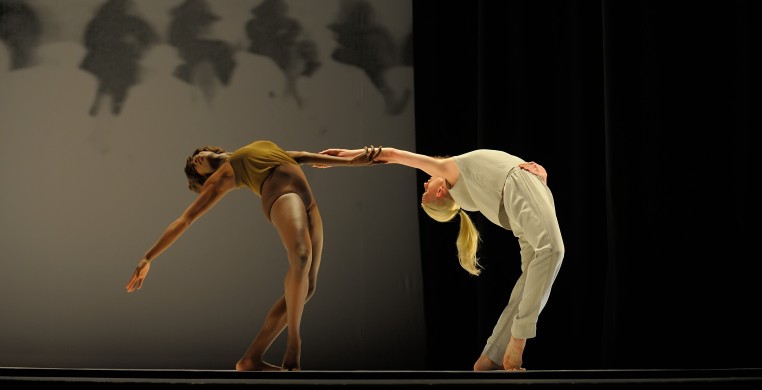Kyle Abraham is a Renaissance man in almost every sense.
Since the Pittsburgh native founded his company Abraham.In.Motion nearly ten years ago, it’s as if the choreographer has never encountered a style of movement that he didn’t like. He’s just as likely to bust out battements as he is a karate kick. If he had the resources, he’d likely trek the most obscure places on earth to find out who was living there and to learn how they were dancing. It wouldn’t be long before audiences started to see that hypothetical style incorporated into Abraham’s vocabulary. He’s as intrepid as a reporter and as thoughtful as a historian. He has never been satisfied with any one thing.
That combination has led to a beautiful, smooth aesthetic, though it’s often at odds with how Abraham has chosen to construct “When the Wolves Came In,” a program that received its local premiere at the Museum of Contemporary Art over the weekend. In “Wolves,” Abraham uses a trio of dances as the basis for confronting race relations over the last half-century during the Apartheid era, the Civil Rights Movement and into the present, albeit with three pieces that have a better chance of working independently than in concert with one another.
“Wolves” was originally conceived while Abraham was Resident Commissioned Artist at New York Live Arts between 2012-2014. He notes that the inspiration for “Wolves” comes from Max Roach’s "We Insist! Max Roach's Freedom Now Suite," the 1960 album originally slated for release in 1963, marking the centennial of the Emancipation Proclamation. (Roach’s album was released early as the Civil Rights movement started gaining momentum.)
There’s more: Abraham also makes it clear that the groundwork for “Wolves” reflects his experience during a visit to the Hector Pieterson Museum in South Africa, a memorial that commemorates a peaceful protest that ended in the senseless death of a 13-year-old Pieterson during the Apartheid years. All this points back to today, Abraham suggests, where a slew of deaths at the hands of police have generated a modern-day uprising in the Black Lives Matter movement.
All of this unfolds somewhat disjointedly when it comes to “Wolves”: The opening piece, also called “When the Wolves Came In,” is set to a classical score by Nico Muhly and features the dancers donning large, beehive wigs. That comes before “Hallowed,” which employs sermon-like recordings of Bertha Gober, informing the lithe movement of Jeremy Neal, Tamisha Guy and Catherine Ellis Kirk—all dressed in dark jumpsuits. The culminating work of the program is called “The Gettin’” and harkens back to the Apartheid days in South Africa. It’s here where Abraham chooses to project footage of the fatal arrest of Eric Garner, all of it danced to Roach’s “Freedom Now Suite,” as interpreted by Robert Glasper.
The theme of “Wolves” is never in doubt. Less clear is the sequencing. Taken as is, “Wolves” is bent on picking apples from the same farm but not necessarily the same tree.

